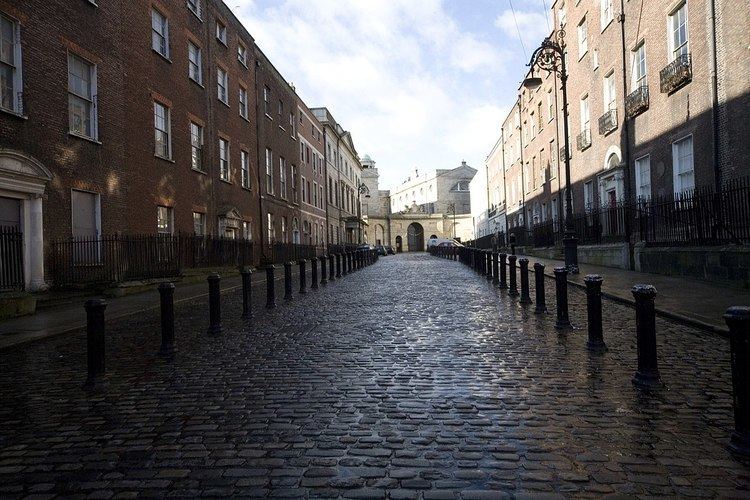Province Leinster | ||
 | ||
Henrietta Street (Irish: Sráid Henrietta) is a Dublin street, to the north of Bolton Street on the north side of the city, first laid out and developed by Luke Gardiner during the 1720s. A very wide street relative to streets in other 18th-century cities, it includes a number of very large red-brick city palaces of Georgian design.
Contents
- Map of Henrietta St Dublin Ireland
- Name
- Georgian Dublin
- Economy
- First residents
- No3
- No4
- No5
- No6
- No7
- No8
- No9
- No10
- Western end
- South side
- No11
- No12
- No13
- No14
- No15
- References
Map of Henrietta St, Dublin, Ireland
Name
The street is generally held to be named after Henrietta, the wife of Charles FitzRoy, 2nd Duke of Grafton, although an alternative candidate is Henrietta, the wife of Charles Paulet, 2nd Duke of Bolton. The nearby Bolton Street is named after Paulet.
Georgian Dublin
Henrietta Street is the earliest Georgian Street in Dublin – it is the model from which Dublin’s Georgian identity is derived. Construction on the street started in the mid-1720s, on land bought by the Gardiner family in 1721. Construction was still taking place in the 1750s. Gardiner had a mansion, designed by Richard Cassels, built for his own use around 1730.
The street was popularly referred to as Primate's Hill, as one of the houses was owned by the Archbishop of Armagh, although this house, along with two others, was demolished to make way for the Law Library of King's Inns.
The street fell into disrepair during the 19th and 20th centuries, with the houses being used as tenements, but has been the subject of restoration efforts in recent years.
There are currently 13 houses on the street. The street is a cul-de-sac, with the Law Library of King's Inns facing onto its western end.
It is also a popular period location for film and TV companies. Among the productions filmed there are Albert Nobbs, Inspector George Gently and Foyle's War.
Economy
Some of these houses have suffered further deterioration following the slowing of the Irish economy in 2008. Most of these images are dated 2008-2010.
First residents
The street was popular with the great 18th-century families. The houses were built to have rear gardens and mews.
No.3
No.4
No.5
No.6
Separate flat within No. 5
No.7
No.8
No.9
No.10
Western end
Here is the entrance to King's Inns
South-side
Here is the King's Inns law library
